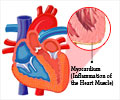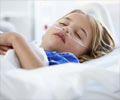Kawasaki Disease - Sign And Symptoms
It was agreed at an international symposium in Tokyo 10 years ago, a definition for Kawasaki disease was universally agreed upon (Paediatric Infectious Disease Journal 1989; 8:663).
- Fever lasting for at least 5 days
- Any four of these five conditions
- Rash
- Swollen hands and feet
- Irritation and redness in the whites of the eye
- Swollen lymph glands in the neck
- Irritation and inflammation in the mouth lips and throat.
- Illness not explained by another known disease.
Some children with Kawasaki disease have diarrhoea,
No blood test for Kawasaki disease is available. The diagnosis is based on symptoms. The disease is also called "mucocutaneous lymph node syndrome" because the classic symptoms are in the mucus membranes (lining of the internal organs), skin, and








